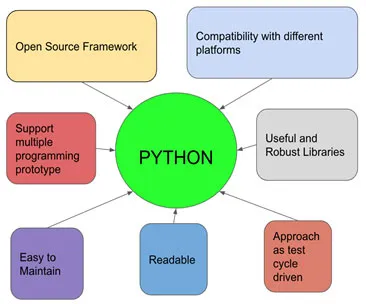
A Python Guide for Web Scraping
Explore Python Tools, Web Scraping Techniques, and How to Automata Data for Industrial Applications (English Edition)
Pradumna Milind Panditrao
- English
- ePUB (handyfreundlich)
- Über iOS und Android verfügbar
A Python Guide for Web Scraping
Explore Python Tools, Web Scraping Techniques, and How to Automata Data for Industrial Applications (English Edition)
Pradumna Milind Panditrao
Über dieses Buch
Get hands-on training on any web crawling/scraping tool and uses of web scraping in the real-time industry
Key Features
? Includes numerous use-cases on the use of web scraping for industrial applications.
? Learn how to automate web scraping tasks.
? Explore ready-made syntaxes of Python scripts to run web scraping.
Description
A Python Guide for Web Scraping is a book that will give information about the importance of web scraping using Python. It includes real-time examples of web scraping. It implies the automation use cases of web scraping as well. It gives information about the different tools and libraries of web scraping so that readers get a wide idea about the features and existence of web scraping.In this book, we started with the basics of Python and its syntactical information. We briefed about the use cases and features of Python. We have explained the importance of Python in automation systems. Furthermore, we have added information about real-time industrial examples. We have concentrated and deep-dived into Python's importance in web scraping, explained the different tools and their usages. We have explained the real-time industrial domain-wise use cases for web scraping.
What you will learn
? Explore the Python syntax and key features of using Python for web scraping.
? Usage of Python in the web scraping tasks and how to automate scraping.
? How to use different libraries and modules of Python.
Who this book is for
This book is basically for data engineers and data programmers who have a basic knowledge of Python and for the readers who want to learn about web scraping projects for industries.
Table of Contents
1. Python Basics
2. Use Cases of Python
3. Automation Using Python
4. Industrial Automation-Python
5. Web Scraping
6. Web Scraping and Necessity
7. Python - Web Scraping and Different Tools
8. Automation in Web Scraping
9. Use Cases-Web Scraping
10. Industrial Benefits of Web Scraping
About the Authors
Mr Pradumna Panditrao is currently working as a Senior Software Engineer and a DevOps tool developer. He has done his Masters in networking and telecommunications. He has a total of 8+ years of experience in various domains like Software Development, DevOps Automation tools, Data mining Crawling tools, Cloud Technologies, and Hardware Profiling. He has good exposure to the cloud and has published a paper on Cognitive Radio, 4G Technology Algorithms. He has given embedded software development lectures and lab demo sessions at Bits Pilani, Goa in 2014-2015.
Häufig gestellte Fragen
Information
CHAPTER 1
Python Basics
1.1 Introduction
1.2 Structure
- History of Python
- Basics of Python
- Python internals
- Installing Python on different operating systems
- Different aspects of Python
- Capabilities of Python
1.3 Objective
- Understand the Python history
- Install Python on different operating systems
- Understand Python from different aspects and its capabilities
1.4 Python and its history
1.4.1 Python versions

1.5 Preference of Python over others
- Open-source framework: Basically, the Python language is open-source, so we can use several open-source Python frameworks, libraries, and development tools to reduce development time and operating costs. Programming is easy with an IDE.
- Useful and robust libraries: Python offers a large collection of useful libraries which can support all possible use cases of a developer. Different modules can be used by developers to meet their specific needs.
- Compatibility with different platforms and systems: Python is supported on multiple operating systems like OSx, Windows, Linux, etc. You can build Python on specific versions, get dependencies, and make compatible versions. For example, you can create a Python program on CentOS 4.5 and run it on a later version of the operating system.
- Supports prototype-based programming: It supports different prototypes like object-orientation support. It supports automatic memory management and multi-threaded programming. This feature is useful for designing very complex applications with a variety of features.
 Figure 1.2: Python usability
Figure 1.2: Python usability - Easy to maintain: Maintenance of application and reusability of code are the top-most priorities of any programmer. Python definitely fits in these criteria as it supports virtual environments (we will cover virtual environments later in the chapter). It means that you can change the version of Python as per the requirement of your application.
- Readable: Python code has high-readability. We can customize a Python application without adding much code due its clean code base.
- Test cycle driven: As application development is rapid with Python, its testing cycle is also fast. Python can be used to design APIs based on ...